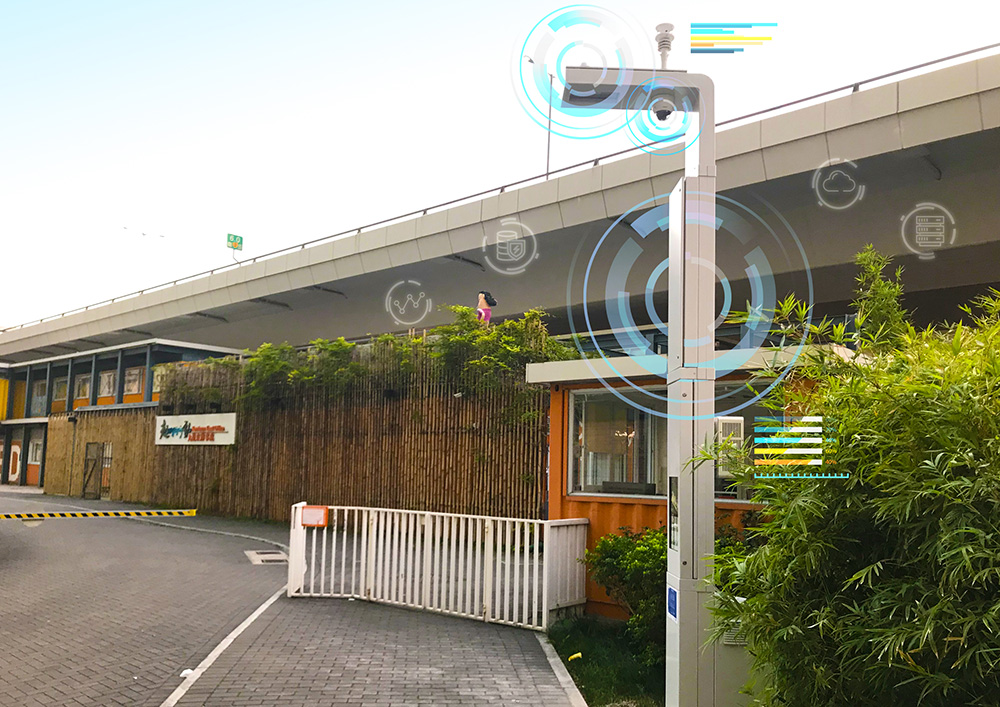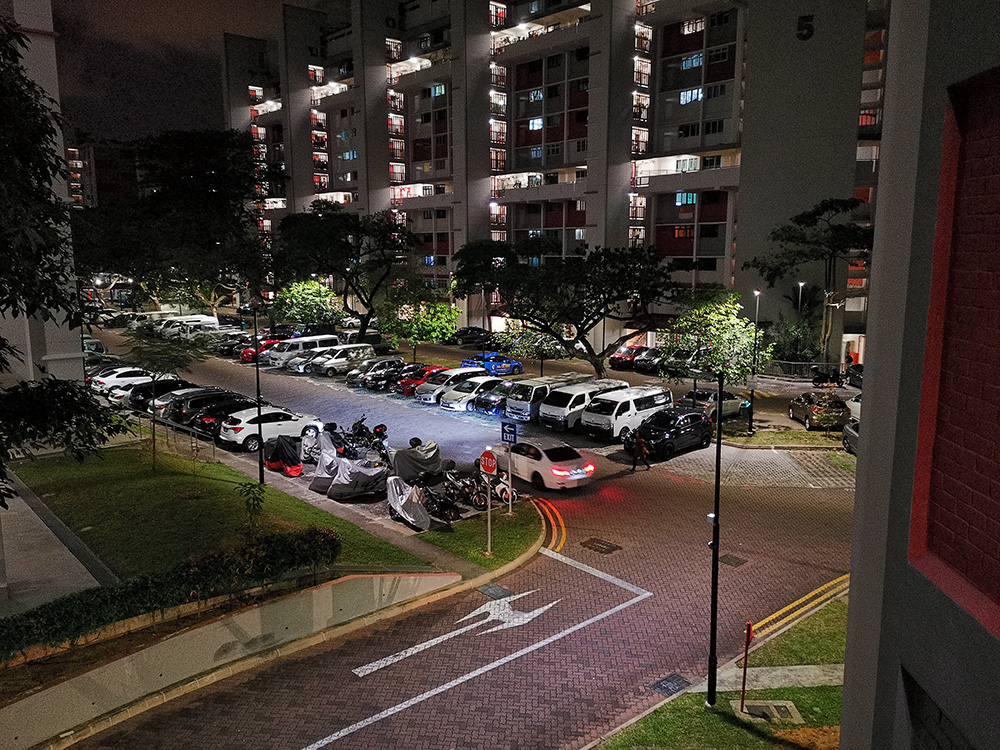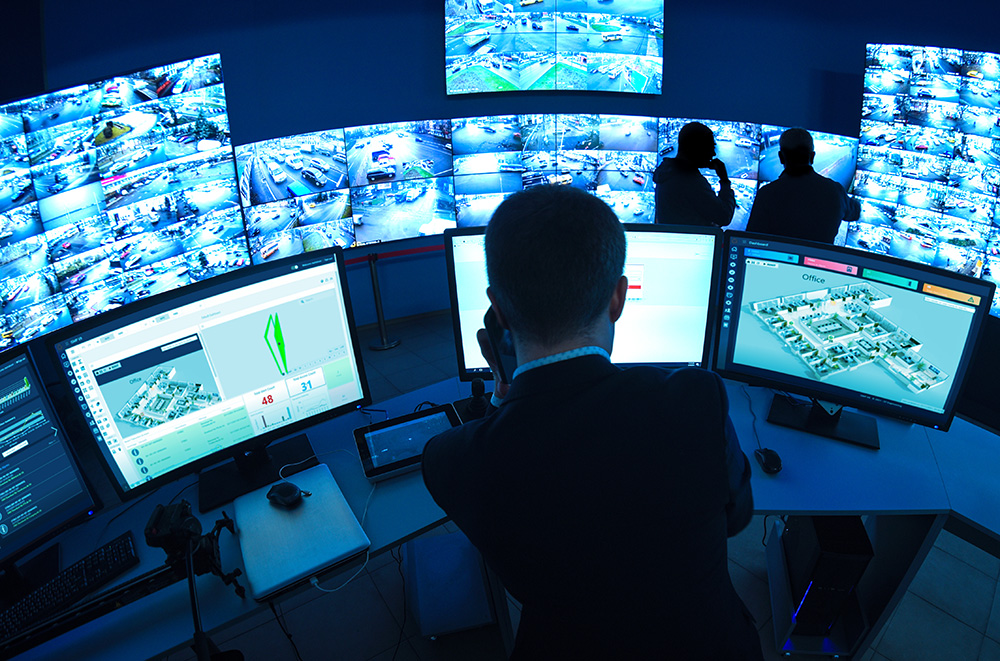How can cities and businesses plan for sustainability and resilience in the face of mass urbanisation, climate change and Covid-19? Is technology and innovation the answer?
 IoT platform provides an overarching backbone for city-wide network infrastructure formed by smart lampposts/street lightings, offering a good entry point for smart city deployments
IoT platform provides an overarching backbone for city-wide network infrastructure formed by smart lampposts/street lightings, offering a good entry point for smart city deployments
At the recent UN Climate Change Conference of the Parties (Cop26) in Glasgow, the renewed global commitment to tackle climate change was accompanied by a palpable sense of fresh urgency. How do we turn these pledges into real change with impact that starts today?
Owning a vision and a well-articulated plan may be an essential starting point, yet more than ever, quick wins are needed, too. There should be available means to reduce the carbon footprint of everyday life and improving the quality of lives of citizens and communities promptly, if not immediately.
In the context of sustainable planning for cities, it is particularly important that action is taken swiftly by taking into account the present, given that many climate and sustainability plans are currently set for delivery within the next 10 to 20 years.
The Covid-19 pandemic has added new pressure to the sustainability agenda. Repeated lockdowns, the closure of workplaces, restrictions on transport, and disruptions to business-as-usual have shone a new perspective on the inadequate continuity provisions by cities and businesses.
The pandemic has shifted people’s priorities, too. The reduction of industry activity and traffic flow saw air and water quality improving, and nature thriving. Many people discovered a new quality of life, freed from rigid office hours and punishing commutes. Some started to actively invest in their outdoor spaces, or made a more permanent move away from densely-populated conurbations. Others resolved to work from home as much as possible in future.
In the context of sustainable planning for cities, it is particularly important that action is taken swiftly by taking into account the present
As city and business planners review their sustainability strategies in the light of these changes, a number of challenges emerges. These include concerns whether operational costs may rise, new goals to set, and incorporating sustainability metrics to gauge the success of their action plans. A mindset change is needed too, if city planners and businesses are to fulfil growing public expectations that sustainability planning will become a prominent feature of their agenda, and be visible in everyday decisions and actions.
The good news is that while ‘greening’ businesses, infrastructure and services may incur an initial investment, over time more sustainable operations and practices will give rise to greater savings. At the same time, proactive organisations can expect their brand reputation to improve as they are seen to be doing the right thing in supporting the global fight against climate change.
When resources such as energy, transport capacity, lighting, building space and even waste processing are not optimised and managed efficiently, cities and businesses miss the chance to reduce their carbon emissions and improve resilience.
ST Engineering’s Urban Solutions business provides a suite of smart city solutions that includes Smart Street Lighting, Smart Lift Monitoring, Smart Waste Monitoring, Smart Mobility and Net-Zero Smart Building Suite solutions. Through these smart digital innovations, the global technology, defence and engineering group helps businesses and city service providers around the world to advance their sustainability goals.
As lighting accounts for the largest proportion of a building’s total electricity use (up to 40 per cent), smart lighting control plays an important role in energy conservation. This is why an increasing number of city planners are investing in smart lighting management systems such as ST Engineering’s AGIL Smart Lighting solution which harnesses smart sensors, IoT, data analytics and cloud computing to optimise lighting efficiency, reducing energy consumption by up to two-thirds while predicting potential faults for proactive maintenance and providing better security and visibility to residents.
 Smart lighting solution reduces energy consumption and optimises lighting efficiency while offering proactive maintenance for buildings and cities
Smart lighting solution reduces energy consumption and optimises lighting efficiency while offering proactive maintenance for buildings and cities
Intelligent power grids are enabling the optimal injection of renewable energy. Across buildings, estates and cities, smart utility systems are tapping on innovative and greener solutions to track and monitor use, increase utility efficiency and minimise consumption and wastage, ultimately to achieve net-zero outcomes.
For more sustainable water consumption, Smart Water Resource Management and Advanced Metering Infrastructure uses IoT, smart sensors and integrated systems to gather, communicate and analyse consumption data in real-time to optimise usage and reduce leakage. The data also provides actionable insights for optimal matching of supply and demand of utilities to reduce wastage.
To help cities and estates become more effective at waste management, waste collection needs to be more efficient while ensuring environments remain clean. ST Engineering’s AGIL Smart Waste Monitoring solution draws on smart sensors and data analytics to help operators optimise route planning, monitor bin and waste collection status in real-time to enhance operations – these are all coordinated via a unified dashboard and central management system. A mobile app provides job and route guidance to the cleaners on the move while providing real-time updates of job completion to the operators.
Smart transport systems bring multiple benefits – from reducing congestion, air pollution and carbon emissions to ensuring smoother and more seamless journeys for drivers and commuters. ST Engineering’s AI-driven Traffic Management solutions and Smart Metro solutions are designed to provide a more connected and greener transport ecosystem.
In addition, with electric vehicles (EV) entering the mainstream as a result of increasing market adoption, ST Engineering’s end-to-end suite of EV solutions is paving the way to support the sustainable transport initiatives of cities worldwide. Its Autonomous Transport Solutions are also making inroads with successful deployments and trials in various cities to support and augment driverless vehicle development programmes.
When multiple assets and services are managed in a smarter and more coordinated way, the scope and pace for transformation moves to the next level with more synergistic benefits.
 Smart city operating system identifies areas for improvement, connects the built environment, and improves estate services and urban management
Smart city operating system identifies areas for improvement, connects the built environment, and improves estate services and urban management
ST Engineering provides the means for this coordinated transformation with its AGIL Smart City Operating System (Smart City OS). Harnessing this intelligent data-driven Smart City OS, city planners, estate and building owners, businesses and service providers can better connect the dots between the built environment’s infrastructure and user experiences to deliver a more sustainable and resilient ecosystem.
The Smart City OS integrates disparate operational technology (OT) and information technology (IT) systems to accelerate the digitalisation and automation of estate and building operations by optimising process flows, workforce deployment and resource management.
As cities gear up to harness the capabilities of big data and smart technologies, they need sustainable solutions that are easy to deploy, affordable, future-proof and capable of enabling various smart city applications
Through utilising innovative technology, smart sensors and a unified secure cloud-based platform, key asset and performance data is aggregated and analysed to provide valuable insights to enhance city, estate and building management.
The Smart City OS also enables the sharing of data to identify issues and problems such as operational, time and cost inefficiencies for improvement and future planning. It has the flexibility to quickly scale operations and resources to better address changing workplace dynamics due to the pandemic, and support the sustainability initiatives of cities and business.
As cities gear up to harness the capabilities of big data and smart technologies, they need sustainable solutions that are easy to deploy, affordable, future-proof and capable of enabling various smart city applications. One of the fastest ways to roll out smart city deployments is through smart street lighting, where lamp posts are equipped with smart sensors to form a wireless sensor network to support the deployment of various smart city applications.
Providing the overarching backbone of this city-wide network infrastructure is ST Engineering’s AGIL IoT Platform. It is agnostic to connectivity technologies and supports cross-domain data collection and analytics for various applications such as smart street lighting; monitoring of environmental conditions such as weather, air quality and noise pollution; smart utility, waste, traffic, and crowd-monitoring. Besides improving energy savings and detecting changes in the environment for early intervention and faster incident response, it also improves safety and enhances quality of life for residents through more efficient delivery of city services.
Being agile and having the ability to proactively adapt and provide protection against potential threats to assets, properties and employee well-being, is critical to ensuring business continuity and resilience of critical infrastructures with minimal disruption and downtime.
ST Engineering’s comprehensive suite of Smart Security and Automation solutions has been widely deployed to help businesses and municipalities ensure secure building access, reliable protection of key installations and safety of people.
 Integrated security management platform provides an encyclopaedia view of efficient centralised security controls and effective response for buildings and key infrastructures
Integrated security management platform provides an encyclopaedia view of efficient centralised security controls and effective response for buildings and key infrastructures
The AGIL Secure Integrated Security Management Platform is an intelligent data-driven solution that integrates multiple disparate security sub-systems such as access control, video surveillance, intruder detection and visitor management, into a holistic platform to provide an encyclopedic view of efficient centralised security controls and effective response for buildings and key infrastructures.
The AGIL Secure Identity Management Platform offers contactless digital personnel and visitor access management while providing on-the-move biometrics identification to bridge the connections among people, their activities and the environment, delivering a frictionless and convenient experience for users.
For cities and businesses to achieve their sustainability goals in the short- and long-run, it is important to plan early and engage technology solution providers that have the necessary deep domain capabilities
The AGIL Fence Perimeter Intrusion Detection System can be quickly deployed on any barriers such as fences, walls, drain gratings and sliding gates, to precisely locate intrusions along patented sensor cables to monitor the perimeter of key infrastructures in real-time and prevent unauthorised access, theft and vandalism.
Sustainability and the need to be resilient will only continue to grow in importance. Businesses, municipalities and cities now need to set these plans in motion with a renewed sense of urgency, given the global sustainability targets accelerated by the need to digitalise due to the pandemic. Organisations or cities that are not operating sustainably could lose out on business or investment opportunities.
For cities and businesses to achieve their sustainability goals in the short- and long-run, it is important to plan early and engage technology solution providers that have the necessary deep domain capabilities and strong track record to enable them to leverage technology and innovation to set change in motion. This will help cities and businesses kick-start and scale deployments, while reaping greater benefits from integrating various systems with cross-domain data, to achieve better economies of scale.
ST Engineering has been transforming cities around the world for a more connected, resilient and sustainable future. With more than 700 projects deployed in over 130 cities under its belt, its suite of smart city solutions addresses the connectivity, mobility, security, infrastructure and environmental needs of cities, delivering urban efficiencies while keeping them safe and secure.
Find out how ST Engineering’s smart city solutions can help your business embark on a sustainability journey for a greener and more resilient future. Visit: www.stengg.com/urban-solutions.
Contact us